Micro Four Thirds was a new standard developed by Panasonic and Olympus that uses a 4/3-type image sensor that makes it possible to reduce the size and weight of a digital interchangeable lens camera. The dawn of Micro Four Thirds meant you no longer had to lug a bulky DSLR around if you didn’t need a camera with a full-frame sensor.
The best Micro Four Thirds cameras are those that pack innovative features into small, portable bodies and are predominantly made by Panasonic and Olympus. However, as an open system, a few other manufacturers have developed Micro Four Thirds bodies as well.
Which cameras are Micro Four Thirds?
In addition to Panasonic’s Lumix G series and Olympus’s OM-D and PEN series cameras, Blackmagic’s popular Pocket Cinema Camera 4K, the Z Cam E1, DJI Zenmuse X5 and the YI M1 also use Micro Four Thirds mounts.
What’s more, Sigma, Tamron, Cosina, Carl Zeiss, Blackmagic and others have committed to developing the Micro Four Thirds system.
It’s also worth noting that Olympus sold its imaging business in the past year, but the new owners of the Olympus imaging brands have pledged to carry on developing the system.
Benefits of Micro Four Thirds cameras
- Sensor size
- Body size
- In-body image stabilisation
- Contrast detection AF
- Electronic viewfinder
Micro Four Thirds cameras offer a nice compromise between the image quality of an ILC and the portability of a compact camera. MFT cameras have larger sensors than compact and bridge cameras, yet smaller body size than a DSLR.
Their contrast-detection AF systems are generally found to be prone to fewer focusing errors than the phase-detection AF systems on traditional DSLRs. The smaller-than-full-frame sensors and smaller body sizes also generate less heat.
What’s more, the best Micro Four Thirds cameras boast electronic viewfinders with high resolution and a handy preview of what your image will look like before you press the shutter button.
Other benefits of Micro Four Thirds cameras are that, along with the smaller bodies, manufacturers can develop smaller, lighter and less expensive lenses.
And if you are a traditional compact camera user, you’ll find that the best Micro Four Thirds cameras give you much better low-light performance thanks to the bigger sensor and image stabilisation, better shallow depth of field effects and more optical choice.
For a deeper dive into the many different camera types and features available, check out our range of camera buying guides.
The best Micro Four Thirds cameras you can buy today
Olympus OM-D E-M1 Mark III
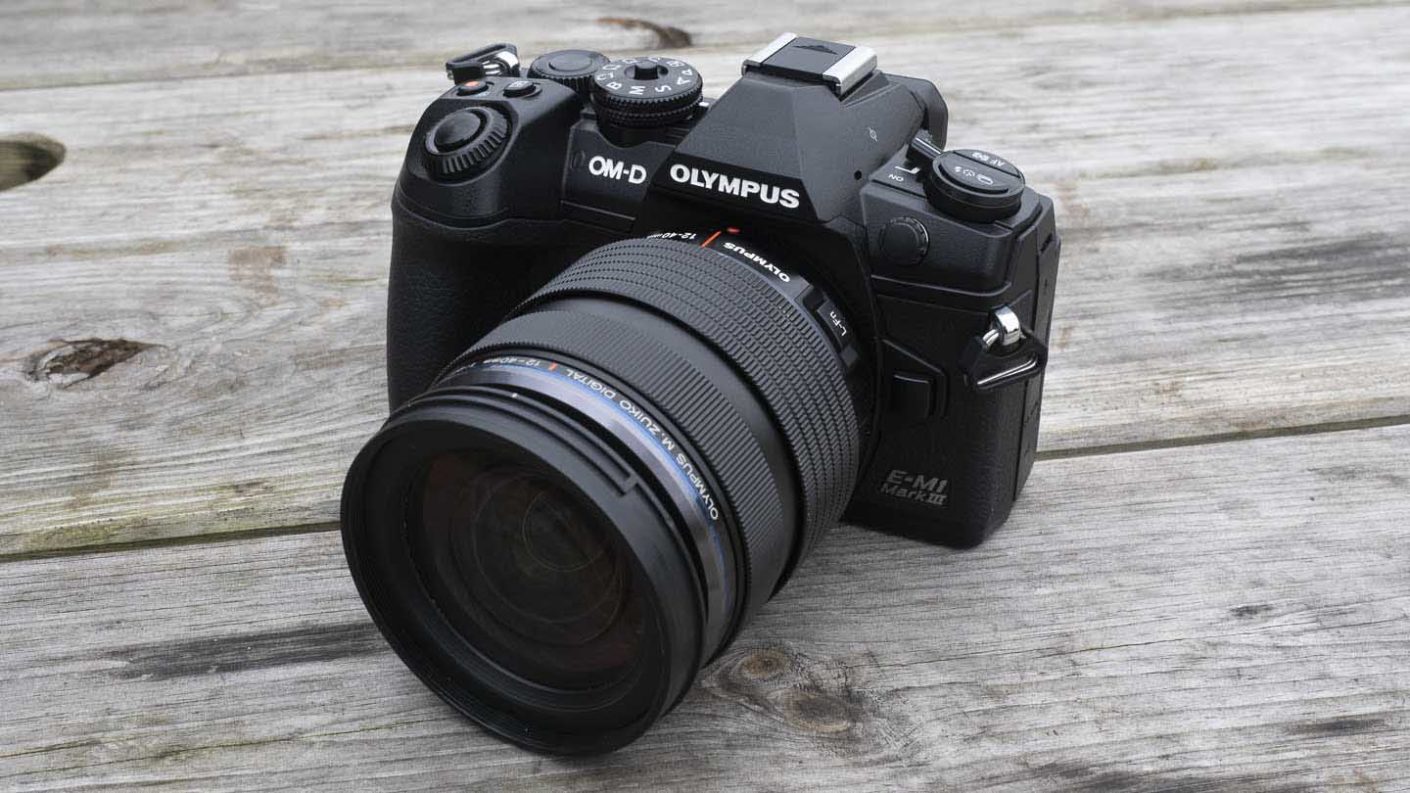
Specification
- Camera type: Mirrorless
- Lens mount: Micro Four Thirds
- Sensor: Four Thirds type 20.4 MP Live MOS sensor
- Announced: 12th February 2020
- Processing engine: TruePic IX
- Autofocus system: Hybrid with 121-point all cross-type focus points
- Max continuous shooting rate: 18fps AF/AE mechanical shutter (C-AF), 60fps in electronic shutter (S-AF)
- Max video resolution: C4K (4096 x 2160) at 30/25p
- Viewfinder: 2,360,000-dot electronic viewfinder
- Sensitivity range: ISO 64-25,600
- Screen: Vari‑angle 3-inch 1,037,000-dot touchscreen
- Storage: 2x SD/SDHC/SDXC (1 UHS-I and 1 UHS-II)
- Dimensions (LxHxW): 134.1 x 90.9 x 68.9mm
- Weight: 504g body only, 580g with battery and SD card
Some of the new features in the E-M1 III come as a result of the uprated processing engine. Live ND mode, for example, uses similar technology to Live Composite mode, but it enables you to preview the impact of a long exposure.
That demands a lot of processing power, but it’s a useful feature for landscape and creative photography. It also means that you don’t need to carry any ND filters with you as the exposure can be extended by up to 32x using the camera’s inbuilt system.
Olympus has given the OM-D E-M1 III’s sensor a new coating, which was introduced with the E-M1X. This reduces the likelihood of dust sticking, making the advanced SSWF (Super Sonic Wave Filter) technology, which vibrates the filter over the image sensor filter 30,000 times per second, even better at keeping the sensor clean.
In some respects the Olympus OM-D E-M1 Mark III might look like a fairly modest upgrade from the OM-D E-M1 Mark II. However, it feels more refined and has some great features that make shooting in tricky conditions a little easier.
It also enables photographers to travel lighter, not just by being relatively small and light itself, but by allowing tripods and ND filters to be left behind in many situations.
Olympus also offers an extensive array of superb lenses and the 2x focal length magnification factor is especially useful for sport and wildlife photographers. While existing OM-D E-M1 Mark II may not want to upgrade, the OM-D E-M1 Mark III makes a very attractive option for enthusiast photographers looking to switch to a mirrorless camera.
£1600
$1499For
- Compact size with vari-angle screen
- Great feature set
- Excellent lens range
Panasonic Lumix GH5 II

Specification
- Camera type: Micro Four Thirds mirrorless
- Announced: 25th May 2021
- Sensor: 20.3 Mp Live MOS Sensor
- Maximum video resolution: C4K (4096x2160)
- Video Quality: 59.94p, 200Mbps (4:2:0 10-bit LongGOP) (H.265/HEVC, LPCM, High-Res Audio), 59.94p, 150Mbps (4:2:0 8-bit LongGOP) (H.264/MPEG-4 AVC, LPCM, High-Res Audio), 29.97p, 400Mbps (4:2:2 10-bit ALL-Intra) / 150Mbps (4:2:2 10-bit LongGOP) / 100Mbps (4:2:0 8-bit LongGOP) (H.264/MPEG-4 AVC, LPCM, High-Res Audio), 23.98p, 400Mbps (4:2:2 10-bit ALL-Intra) / 150Mbps (4:2:2 10-bit LongGOP) / 100Mbps (4:2:0 8-bit LongGOP) (H.264/MPEG-4 AVC, LPCM, High-Res Audio)
- Video format: MOV: H.264/MPEG-4 AVC, H.265/HEVC , MP4: H.264/MPEG-4 AVC, H.265/HEVC
- Log Mode: V-Log L pre-installed
- Sensitivity range: Stills: ISO 200-25600 (expandable to ISO 100-25600), Video: ISO 200-12800 (expandable to ISO 100-12800)
- Stabilisation: 5-axis Dual IS II giving 6.5EV shutter speed compensation
- Viewfinder: 3.68m-dot OLED with 60/120fps refresh rate
- Touchscreen: 3-inch 1.84m-dot Free-angle touchscreen
- Storage: Dual UHS-II SD slots
- Maximum stills continuous shooting rate: AFS/MF: 12 frames/sec, AFC: H: 9 frames/sec (with Live View), 6K Photo: 30 frames/sec, 4K Photo: 60 frames/sec, 30 frames/sec
- Dimensions: 138.5 x 98.1 x 87.4 mm / 5.45 x 3.86 x 3.44 inch (excluding protrusions)
- Weight: 727g / 1.60 lb with SD card and battery
While it doesn’t make a dramatic upgrade on the GH5, the Panasonic Lumix GH5 II puts ticks in lots of boxes. It’s a very capable video camera and a competent stills camera, making it ideal for modern content creators.
Inside the Panasonic GH5 II is the same 20.3Mp sensor as is inside the GH5 but it has new AR (Anti-Reflective) coating that reduces flare and ghosting. It’s also coupled with the Venus Engine 10 processing engine that’s in the Panasonic Lumix S1H – the company’s full-frame video-centric mirrorless camera.
This combination enables the GH5 II to capture 10-bit 4:2:0 C4K (4096 x 2160) video at up to 60fps and 200Mbps or 10-bit 4:2:2 C4K at up to 30fps and 400Mbps. If an external recorder is connected via HDMI, it’s also possible to record C4K 4:2:2 10-bit 60p video externally while simultaneously recording in 4:2:0 to the card in the camera.
In short, the Panasonic GH5 II is capable of delivering very good stills and video, and there’s a wealth of options for customising it so it performs the way you want it to.
£1499
$2100For
- Extensive array of features
- Excellent stabilisation system
- Simple live streaming via smartphone
Panasonic GH5

As well as stills the GH5 is designed to shoot 4K video and it has an extensive range of features to give it appeal to professional videographers. Aspects such as the variable frame rates and 10-bit recording will be of particular interest along with the ability to add V-LogL recording via an optional software key.
The GH5 offers videographers the kind of specification and video quality that is normally only made possible by a much larger, more expensive cinematic camera. It’s even possible to connect XLR mic via an optional adaptor.
In addition to the extensive range of video quality, format and frame rate options, the GH5 has a high-quality viewfinder, excellent vari-angle touch-screen and both 4K Photo and 6K Photo mode to simplify capturing fleeting moments. It’s also dust and weatherproof so you can use it without concern outdoors.
What’s more, Panasonic has shown real commitment to this camera. The company has continually issued new firmware releases that add relevant new technology. In particular, firmware version 2.0 added:
- 4K 4:2:2 10-bit 400Mbps ALL-Intra
- FHD 4:2:2 10-bit 200Mbps ALL-Intra
- 4K HDR video in Hybrid Log Gamma
- 6K anamorphic mode
- 4K anamorphic 4:2:2 10-bit 400Mbps ALL-Intra
- De-squeeze assist viewing mode
- Improved AF and IS in video modes
Find the best deals on the Panasonic GH5 and accessories at Amazon UK and Amazon US.
£1799
$1499For
- Extensive video specification
- High-quality stills and video
- High-quality EVF and vari-angle touch-screen
Olympus OM-D E-M5 Mark III
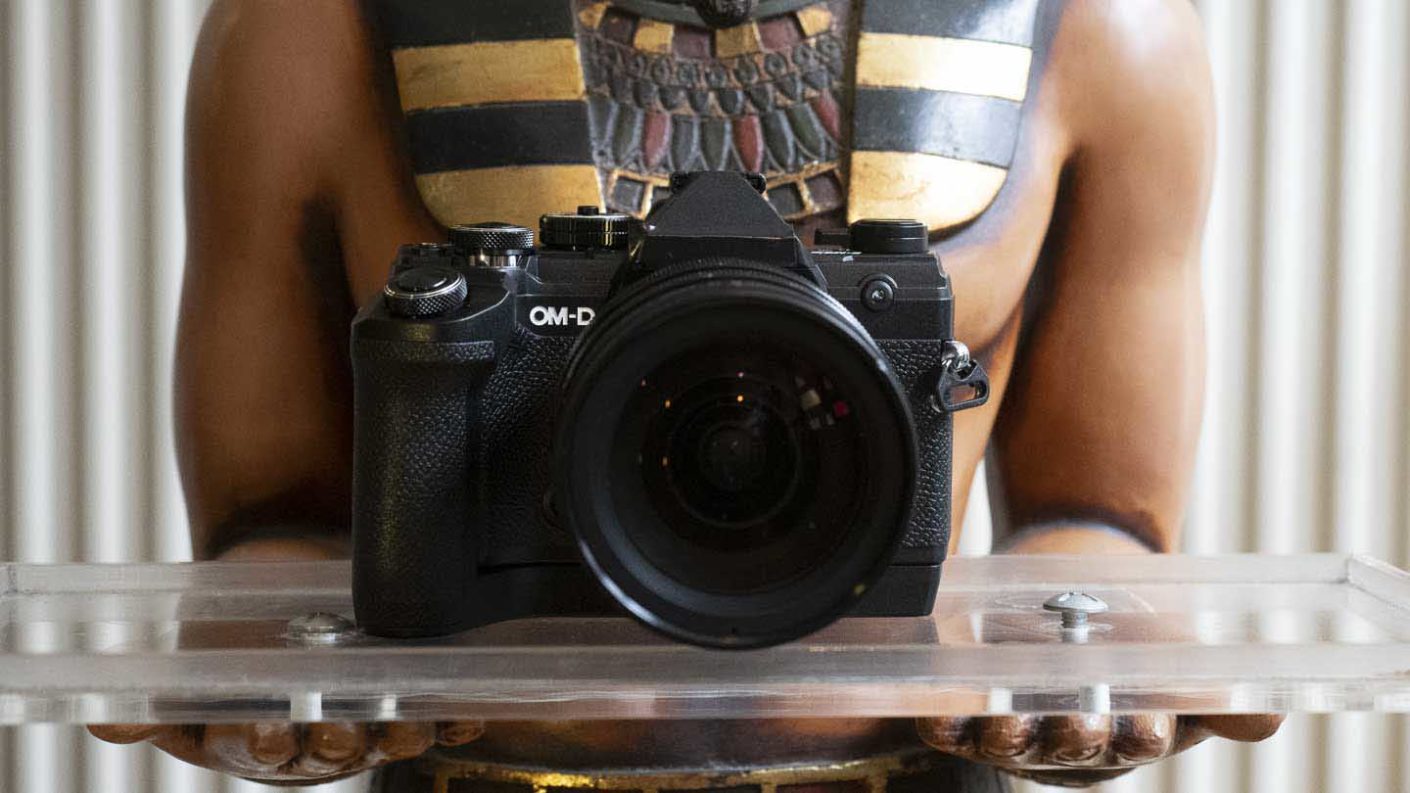
Specification
- Camera type: Mirrorless camera
- Sensor: 20.4Mp Live MOS Micro Four Thirds sensor
- Lens mount: Micro Four Thirds
- Processing engine: TruePic VIII
- Sensitivity range: ISO 64-25,600
- Autofocus system: Hybrid with 121 (all cross-type) phase-detection AF points
- Maximum continuous shooting rate: Mechanical shutter: 10fps with focus and exposure fixed at the start of the burst, 6fps with C-AF, Electronic Shutter 30fps and 10fps
- Max video resolution: C4K 24p at up to 237Mbps / 4K 30p, 25p, 24p at 102Mbps
- Live Bulb Shooting Options: Live Composite, Live Time, Live Bulb, Focus Bracketing, Focus Stacking, 50Mp High Res Shot modes
- Viewfinder: 2,360,000-dot electronic viewfinder
- Screen: Vari‑angle 3.0-inch 1,037,000-dot touchscreen
- Dimensions (W x H x D): 125.3 x 85.2 x 9.7mm
- Weight: 414g including battery and memory card, 366g body only
The Olympus OM-D E-M5 Mark III sits below the OM-D E-M1 Mark III in Olympus’s interchangeable lens camera lineup. It has a smaller body, which makes it a great choice for travel. It also produces nice images and the stabilisation system is incredible, enabling you to hand-hold the camera and get sharp images with exposures measured in whole seconds. In addition, it does a good job with video; although if you’re really serious about shooting moving images you might want to look at the Panasonic Lumix G90 which has a true Log mode.
Olympus has given the E-M5 Mark III the same 20.4Mp Live MOS sensor as the OM-D E-M1 Mark II. The processor is also listed as the same TruePic VIII engine, but Olympus tells us it’s been updated for a bit more oomph.
Like the OM-D E-M1 II, the OM-D E-M5 III has a 121-point (all cross-type) phase-detection autofocus (AF) system. There are also clever shooting options such as Live Composite, Live Time, Live Bulb, Focus Bracketing, Focus Stacking and a 50Mp High Res Shot mode.
As with its predecessor, the OM-D E-M5 II, the High-Res Shot mode is a tripod-only option. When this mode is activated, the E-M5 III shifts the imaging sensor by 0.5-pixel movements between 8 shots. These are then merged into one image that’s equivalent to 50Mp.
Olympus has upgraded the video capability of the OM-D E-M5 Mark III in comparison with the Mark II model. The new camera is capable of shooting C4K 24p video at up to 237Mbps or 4K 30p, 25p, 24p video at 30p 102Mbps.
What’s more, Full-HD video can be shot at up to 120p for slow-motion playback.
Read our buyer’s guide to the best Olympus cameras
£1100
$1199.99For
- Images full of detail
- Low noise at higher ISOs
- Superb stabilisation
Olympus OM-D E-M1X
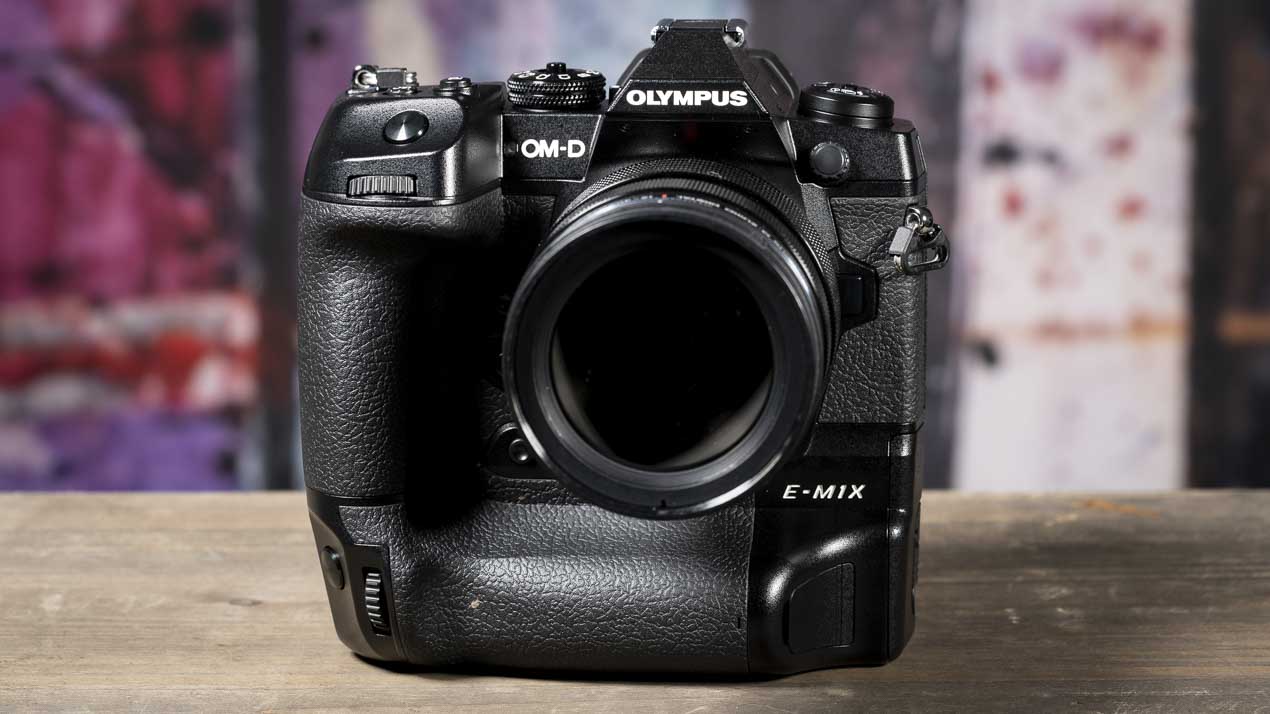
Specification
- Camera type: Mirrorless
- Sensor: 20.4Mp Four Thirds Type (17.3 x 13.0mm) CMOS
- Lens mount: Micro Four Thirds
- Sensitivity range: ISO 64-25,600
- Processing engine: 2x TruePic VIII
- Autofocus system: Hybrid with 121 cross-type points (800 in magnified view)
- Max continuous shooting rate: 18fps with AF tracking, 60fps with AF locked on first frame with electronic shutter
- Pro Capture High Mode: 60fps
- Pro Capture Low Mode: 18fps
- Burst Mode in S-AF: 15fps for 143 raw files
- Burst Mode in C-AF: 10fps for 283 raw files
- Max video resolution: 4K (4096 x 2160) at 24p
- Viewfinder: Electronic with 2,360,000 dots
- Screen: Touch-sensitive vari-angle 3-inch LCD with 1,037,000 dots
- Storage: 2x SD/SDHC/SDXC (UHS-II)
- Dimensions (WxHxD): 144.4 x 146.8 x 75.4mm
- Weight: 849g (body only), 997g (including 2 batteries and memory cards)
The OM-D E-M1X is a doubled-gripped mirrorless camera. It uses Olympus’s Pro Capture mode for shooting stills of very fast action. Thanks to the dual processors, there’s also no blackout in the viewfinder when this is in action.
In Pro Capture High mode, the shooting rate is 60fps, but the focusing is fixed at the start of the sequence. Switch to Pro Capture Low, and you can shoot at 18fps with continuous focusing.
Pro Capture mode is designed to help you record fleeting moments that are easily missed. To that end, when it’s activated the camera starts writing images to the buffer as soon as the shutter release is half-pressed. Once the shutter button is pressed fully, the 35 images that were buffered immediately before it was pressed are recorded along with 100 from immediately after.
There’s also a standard sequential shooting mode that uses the mechanical shutter. When this is in action, the maximum shooting rate in single AF mode is 15fps for 143 raw files. In continuous autofocus mode, the maximum is 10fps for 283 raw files.
A High Res Shot mode also delivers larger and more detailed images. The 50Mp Handheld mode captures the images quickly but then takes a little longer to render the final shot than the Tripod mode. Comparing the results with standard images reveals a nice jump in the level of detail.
Similarly, the 80Mp tripod mode delivers impressive results. It gives a significant boost to the size of print that you can make. That compositing also has a beneficial effect on the dynamic range as there’s more detail visible (and extractable) from the shadows.
£2199
$1999For
- One of the fastest cameras you can buy
- Pro Capture Mode offers lots of flexibility
- High Res Shot mode is very impressive
Panasonic GH5S

Specification
- Sensor: 10.28MP Multi Aspect Ratio MOS Sensor
- Video: DCI 4K60p and Full HD 1080/240p Video
- Log Mode: V-Log L Gamma and HDR Hybrid Log Gamma
- Video Quality: Internal 4:2:2 10-Bit Long GOP
- Viewfinder: 0.76x 3.68m-Dot OLED Viewfinder
- Sensitivity: Dual Native ISO 400 and ISO 2500
- Touchscreen: 3.2" 1.62m-Dot Free-Angle Touchscreen
- Memory & Connectivity: Dual UHS-II SD Slots; Wi-Fi & Bluetooth
- Stills: 12-fps Cont. Shooting and 4K PHOTO Modes
If video is your bag, the GH5S is not only the best Micro Four Thirds camera for video but arguably the best camera for video you can buy. While many videographers have hailed the Panasonic GH5 as the ultimate video camera, Panasonic is now calling it the ‘ultimate hybrid camera’ with the GH5S getting ‘ultimate video camera’ status.
Like the GH5, the GH5S can shoot Cinema 4K (4096 x 2160) footage. However, whereas the GH5 is limited to 24p at this resolution, the GH5S can shoot at 60p, 50p, 30p, 25p or 24p. Furthermore, if you opt for 30p, 25p or 24p, you can shoot that C4K footage in 4:2:2 10-bit for a greater range of colours and smoother tonal gradations.
If high bitrates are important, the GH5S can record 4:2:2 10-bit 400-Mbps All-Intra in 4K 30p, 25p or 24p and C4K 24p. While C4K and 4K footage can be recorded at up to 60fps, Full-HD (1920 x 1080) footage can be recorded at up to 240fps, giving 10x slow motion playback.
Inside the GH5S is a new 10.2Mp High Sensitivity MOS sensor coupled with a Venus Engine. Although it has the Micro Four Thirds (MFT) lens mount, its sensor is a little larger than is found in most MFT cameras because it’s a Multi Aspect Ratio unit that enables the same diagonal angle of view to be recorded whatever the aspect ratio of the image or video.
What’s more, in a new move for a Panasonic G-series camera, each pixel on the GH5S sensor has two analogue circuits and this enables two base sensitivities (ISO 400 and ISO 2500). This Dual Native ISO Technology and the lower pixel count of the GH5S are designed to improve dynamic range and help keep noise in check even in very low light when sensitivity (ISO) is high.
£1829
$1997.99For
- Impressive video specification
- Timecode IN/OUT
- V-Log L pre-installed
Panasonic Lumix G9

Specification
- Camera type: Micro Four Thirds mirrorless camera
- Sensor: 20.3 million Four Thirds type (17.3 x 13mm)
- Burst Mode: 20fps with AF-C, 60fps with AF-S
- Autofocus: 225-point Contrast detection
- Video: 4K (3840 x 2160) at 60p, 50p, 30p, 25p, 24p with no cropping
- Dimensions (W x H x D) : 136.9 x 97.3 x 91.6 mm / 5.39 x 3.83 x 3.61 inch (excluding protrusions)
- Weight: 658g / 1.45lb including 1 SD card x and battery, 586g / 1.30lb body only
The Panasonic Lumix G9 is Panasonic’s flagship Micro Four Thirds stills-camera and it sits alongside the GH5 at the top of the company’s G-series interchangeable lens camera line-up.
Like the GH5, the G9 is a mirrorless camera with a Four Thirds Type sensor and a Micro Four Thirds lens mount. Panasonic says the camera is aimed at enthusiast outdoor and wildlife photographers.
While the GH5 is largely known as a video camera, it’s also a very capable stills camera. The fact that the Panasonic Lumix G9 has the same sensor and processing engine, but has been tuned for stills rather than video is, therefore, good news for photographers. It also feels like a high-quality camera, being light yet sturdy with a good-sized grip while the touch-control is accompanied by a healthy array of physical controls.
The G9 has the same 20.3Mp sensor and Venus 10 processing engine as the GH5. However, Panasonic tells us the G9’s sensor and processor have been tuned very differently to suit the G9’s stills-shooting focus. To boost detail resolution, the sensor also has no optical low-pass filter.
While 20Mp images will suffice for many situations, the G9 also has a High Resolution mode that enables 80-megapixel images to be created in JPEG and raw formats in-camera. In this mode the camera takes a sequence of 8 images in quick succession, shifting the sensor a little between each shot. These images are then merged to create a single larger image with more detail.
This is a tripod-only mode and it takes approximately 4 seconds to process the image – that’s about half the time that the Olympus OM-D E-M1 Mark II takes in its Pixel Shift mode.
Panasonic has also given the G9 a very high-quality electronic viewfinder, an articulating touch-screen and a blistering continuous shooting rate. Further good news is that the AF system can keep up with the frame rate so you can shoot sport and action.
£1499
$1698 / €1729For
- Compact weather-sealed body
- Stabilisation system rated at 6.5EV
- High-quality EVF and screen
Olympus OM-D E-M10 Mark IV
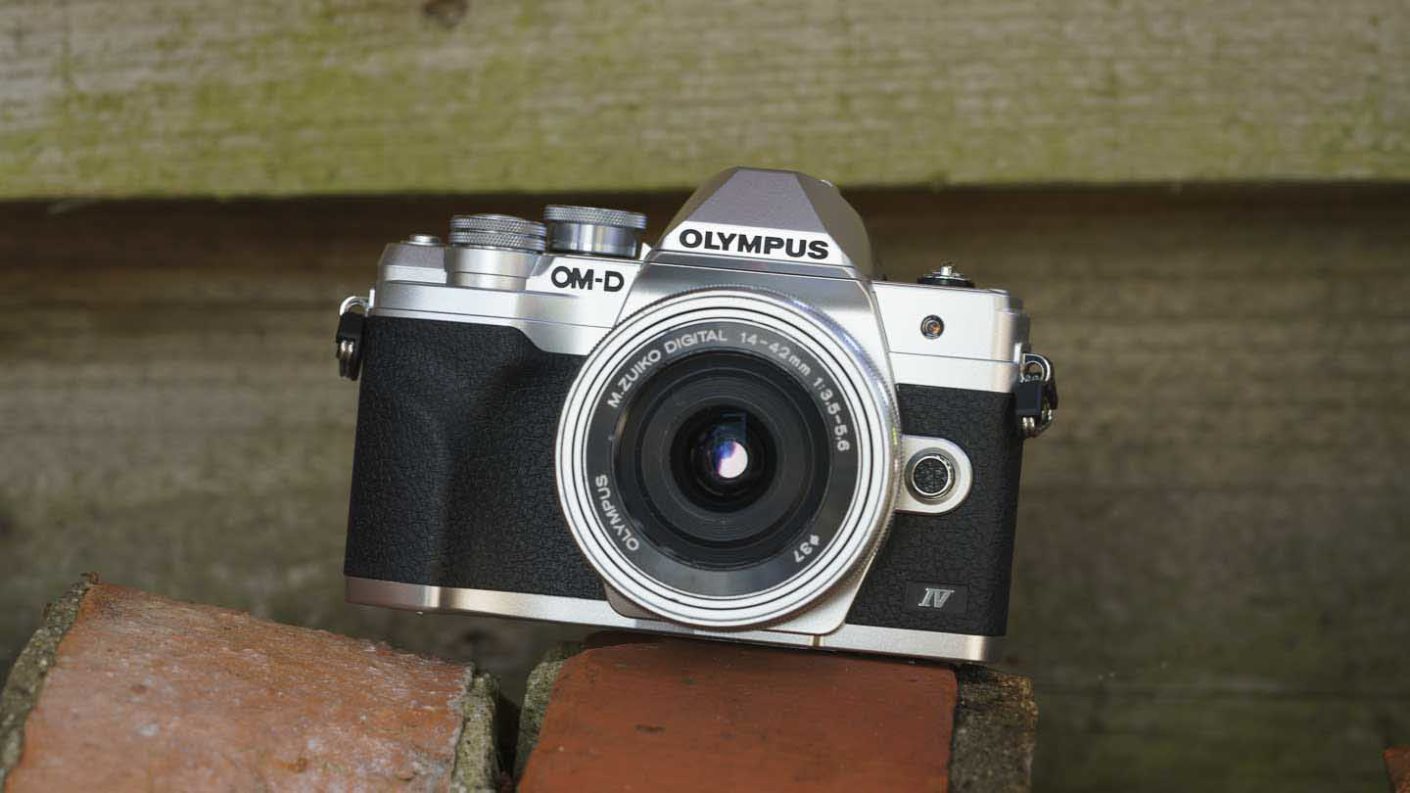
Specification
- Camera type: Micro Four Thirds mirrorless
- Announced: 4th August 2020
- Sensor: Four Thirds Type 20.3Mp Live MOS
- Processing engines: TruePic VIII
- Sensitivity range: ISO 80-25,600
- Viewfinder: 2,360,000-dot electronic with 1.23x magnification and 19.2mm eye point
- Stabilisation: 5-axis with up to 4.5EV shutter speed compensation
- Screen: 3-inch 1,037,000-dot tilting touchscreen
- Focus modes: Manual focus, Single AF, Continuous AF, Single AF + MF, AF Tracking, Super Spot AF, Face Detection AF
- Exposure modes: Programme, Aperture priority, Shutter priority, Manual, Bulb, Time, i-Auto, Scene Modes, Art Filter, Movie, Live Time, Live Composite, Advanced Photo Modes (Live Composite, Live Bulb, Multiple Exposure, HDR Backlight, Silent, Panorama, Keystone Compensation, AE bracketing, AF bracketing)
- Autofocus system: Contrast detection with up to 121 points
- Autofocus point selection modes: All target, Group target (9-areas), Single target
- Exposure metering: 324 zones Multi-pattern Sensing System with ESP, Spot, Centre weighted, Highlight and Shadow mode
- Art filers: Pop Art, Soft Focus, Pale & Light Colour, Light Tone, Grainy Film, Pin Hole, Diorama, Cross Process, Gentle Sepia, Dramatic Tone, Key Line, Water colour, Vintage, Partial Colour, Bleach Bypass, Instant Film
- Shutter speed: 1/16,000-60sec, Bulb to 30mins
- Maximum continuous shooting rate: High: 15 fps Low: 6.3 fps, Max. number of frames: High 42 raw files or 49 (LF) JPGs, Low: 945 raw files or until the card is full with (LF) JPGs
- Video resolution: 4K (3840 x 2160) / 30p, 25p, 24p / IPB (approx. 102 Mbps) Full HD (1920 x 1080) / 30p, 25p, 24p (MOV) Full HD (1920 x 1080) / 60p, 50p / IPB (F,N) / (MOV) HD (1280 x 720) / 60p, 50p, 30p, 25p, 24p (MOV)
- Time lapse: 4k, 1080p, 720p
- Flash: Built-in GN 7.2 (ISO200), hotshoe for external flash
- Connectivity: Wi-Fi, Bluetooth
- Multiple exposure: 2 frames with or without autogain
- Storage: SDHC/SDXC UHS-II
- Dimensions (WxHxD): 121.7x84.4x49mm
- Weight: 383g including battery and SD card
Despite its compact size, the Olympus OM-D E-M10 IV has a viewfinder built-in and a tilting touchscreen on its rear. As it has the Micro Four Thirds mount, it’s also compatible with Olympus’s (and Panasonic’s) extensive range of lenses – as well as third-party optics.
In an upgrade from the 16Mp E-M10 Mark III, the Olympus E-M10 IV has a 20Mp sensor and a screen that can flip down through 180-degrees for viewing from the front, making it useful for selfies and vlogging.
The Olympus OM-D E-M10 Mark IV isn’t much bigger than some compact cameras with much smaller sensors yet it’s much more versatile, has a great collection of features and produces better image quality.
Aside from the increase in the pixel count, it makes a fairly small step up from the OM-D E-M10 Mark III, but the autofocus system is marginally better and the ability to see the screen from in front of the camera is a useful addition.
The Olympus OM-D E-M10 Mark IV makes a very good first serious camera and is an excellent model for anyone looking for a smaller alternative to a large camera. It’s also compatible with an extensive collection of lenses.
£699
$649For
- Very compact, yet versatile camera
- Tilting screen can face forwards for selfies and vlogging
- Live Composite and Live Bulb mode make long exposure photography easy
Panasonic Lumix G100
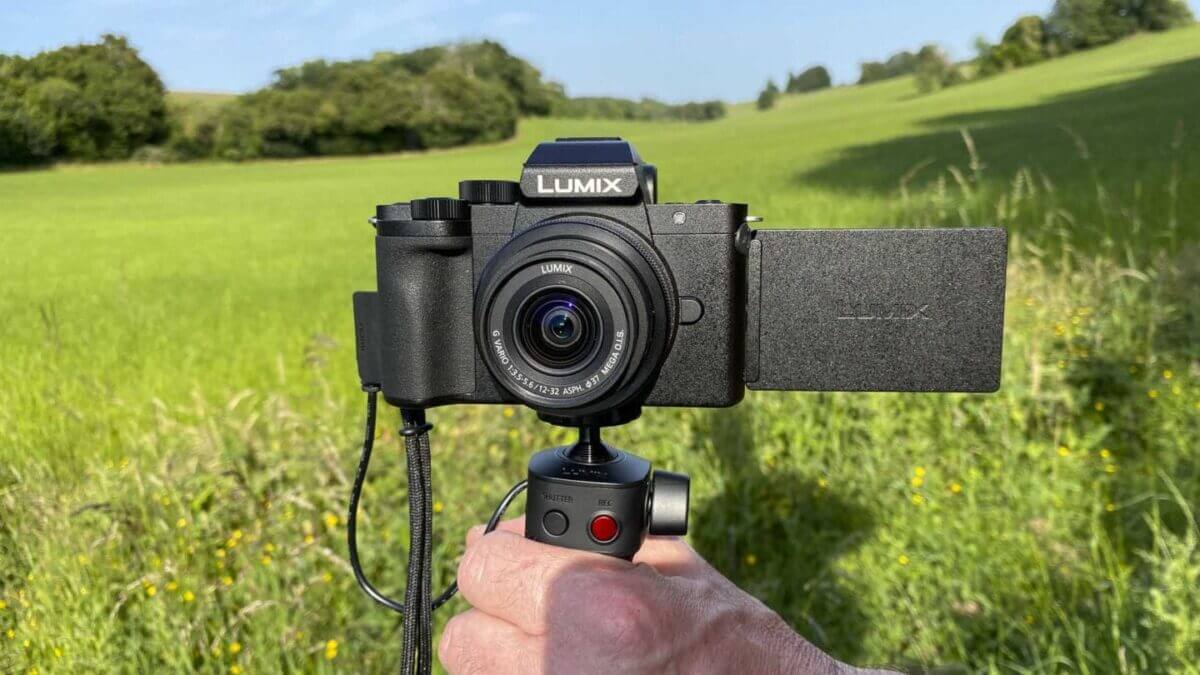
Specification
- Camera type: Mirrorless
- Announced: 24th June 2020
- Sensor: 20.3Mp Four Thirds type CMOS
- Lens mount: Micro Four Thirds
- Screen: 3-inch 1,840,000-dot vari-angle touchscreen
- Viewfinder: 3,480,000-dot electronic viewfinder
- Key video specifications: 4K (3840x2160) at 24,25,30p and 100Mbps, V-Log L and Ozo Audio by Nokia
- Weight: 310g body only, 352g with SD card and battery, 412g with the 12-32mm lens
- Dimensions (WxHxD): 115.6x82.5x54.2mm
Vlogging is a growth area at the moment and Panasonic has a good reputation amongst videographers. Looking to capitalise on these two points, Panasonic has introduced the Lumix G100 which while having features that make it suitable for stills photography, is aimed at novice videographers and vloggers.
Naturally, that means it’s capable of shooting 4K or Full HD video at a selection of frame rates. Something to keep in mind with 4K recording, however, is that there’s a slight crop applied so the 12-32mm kit lens looks a little longer than its usual 24-64mm effective focal length.
Helpfully, the Panasonic G100 has a Rec Frame Indicator that outlines the frame in red when you start recording. There’s also a Frame Marker feature that can be set to indicate the framing of a selection of aspect ratios favoured by some social media channels. The video is recorded as normal but you can preview what’s in the frame with your selected aspect ratio.
There’s also a Slow&Quick option on the mode dial to ease creating slow motion and quick motions footage. When this is selected, there are menu options to enable 2x, 4x and 8x quick recording or 2x and 4x slow recording. The camera cranks up or reduces the frame rate accordingly and the footage is output at the intended viewing rate so there’s no need to adjust the playback frame rate in post-processing.
While, as usual, the sound isn’t recorded in Slow&Quick mode, the autofocus system does work, which makes the mode more versatile.
Further good news is that the Panasonic G100 has 5-axis hybrid image stabilisation. This combines an in-camera electronic stabilisation system with lens-based stabilisation when a stabilised lens is used.
£590
$747.99For
- Very compact
- Viewfinder and vari-angle touchscreen
- Clever Ozo Audio by Nokia onboard

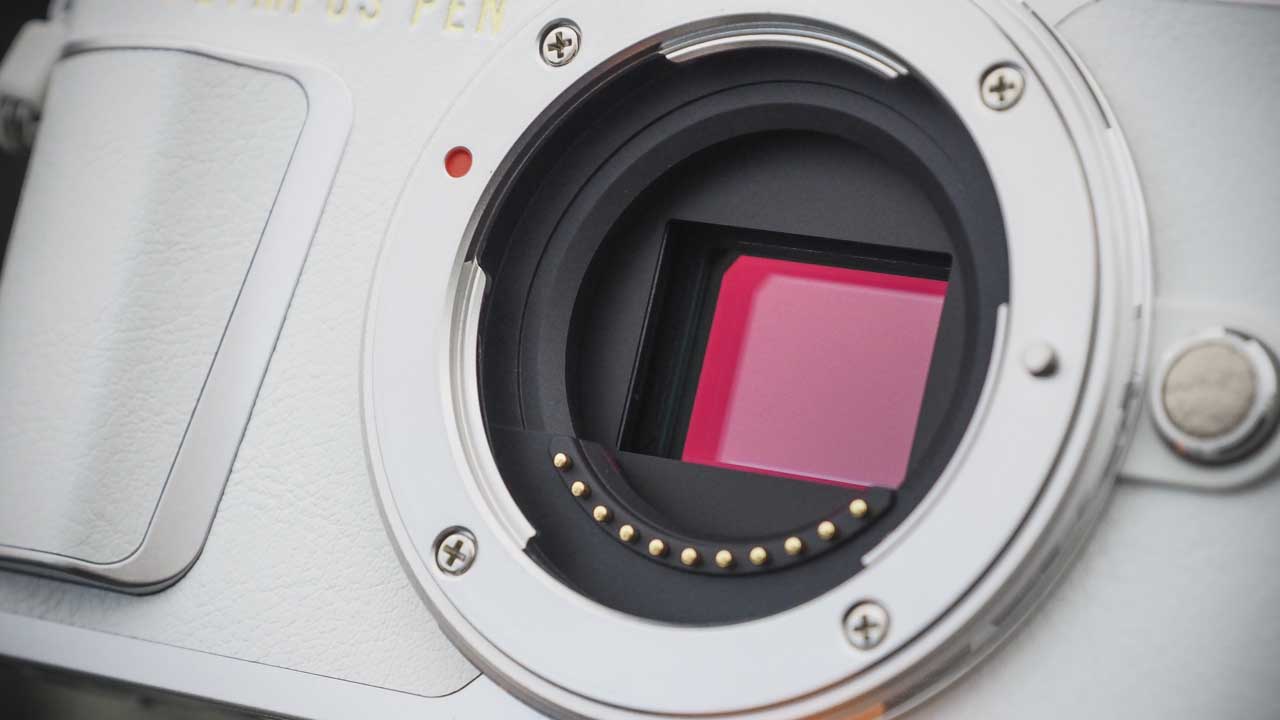

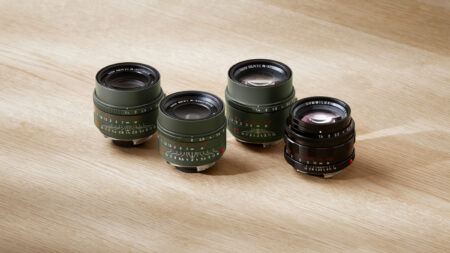

Leave a Reply
You must be logged in to post a comment.